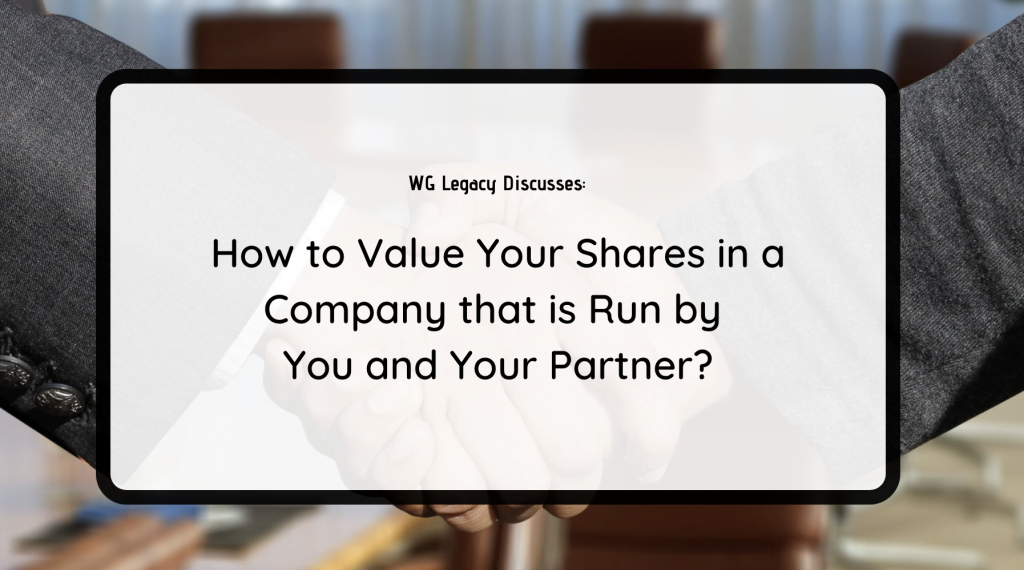Question:
Hi, my name is John. I run an IT store in a retail shop located at Damansara Jaya with Jack, my business partner under IT KING Sdn Bhd. I own 60% shareholdings of IT KING and Jack holds the remaining 40% of the company. Li, our accountant has prepared last year’s financial accounts for IT KING and it is as follows:

Recently, we had coffee with Wei, our business associate. He shared that he had just set up a buy-sell trust between him and his partner for their company. Thus, he recommends us to do the same for our business. As such, we are interested.
The first step to set up a buy-sell trust is for us to agree upon the price that both of us will buy from and sell to our shares in IT KING from each other if anyone of us happens to pass on prematurely or being totally disabled or critically ill in the future. As such, our question is, ‘How should we value our interest in IT KING?’
Answer:
In general, there are 3 common methods to determine the price for shares of IT KING. Let us explore:
Method 1: Just Fix a Sum
Obviously, this would be the fastest and most convenient way of fixing the price of IT KING for John and Jack. It is not troublesome as there is no calculation and estimation involved in valuing the business of IT KING. For instance, if John says to Jack, ‘Bro, let’s just fix it at RM 3 million’ and Jack is agreeable to it, then that is it, the value of IT KING would be fixed at RM 3 million.
Subsequently, John and Jack would set up a buy-sell trust in such a way that will enable John to buy over Jack’s 40% stake in IT KING for a price of RM 1.2 million (RM 3 million x 40%) if Jack passes on, or becomes totally disabled, or becomes critically ill in the future.
But often, the fixing of an agreeable price is not as straightforward because the value of a business changes over time depending on what it has and how much it makes in the future. Therefore, if this method is chosen, I would say it is best for all shareholders to include a condition to review the buy sell agreement every 2 years once to determine a more relevant price for the business.
As such, this leads us to:
Method 2: P/E Ratio
P/E Ratio is a common tool to value a business and the price is set based on the multiples of its net earnings or profits after tax.
For instance, if a business earns RM 1 million a year and its owners are selling it for RM 10 million, this means the owners’ offer is at a P/E Ratio of 10.
In John and Jack’s case, it may not be suitable for them to use P/E Ratio as basis for valuing their interests in IT KING. This is because, typically, owners of private limited companies tend to lower their profits before tax (PBT) by paying salaries and EPF contributions to themselves in order to save on corporate taxes. Profits after tax (PAT) for IT KING, as a result, would be much lower and does not really reflect upon IT KING’s actual ability of generating income.
For the sake of our discussion, if John and Jack use P/E Ratio and set the agreed price of IT KING at P/E Ratio of 10. Based on IT KING’s latest PAT of RM 132,900, it means, John and Jack will value their company at RM 1,329,000 (RM 132,900 x 10). It is not practical for them as the amount is a lot lower than RM 3 million, which is the reported amount of shareholders’ equity for IT KING.
Method 3: P/B Ratio
P/B Ratio is a tool to value a business and the basis of valuation is on how much the company owns and how much it owes.
If a business has RM 1 million in shareholders’ equity and its owners plan to sell it for RM 2 million, this means the owners’ offer is at a P/B Ratio of 2.
John and Jack may consider P/B Ratio as their basis to determine the value of IT KING for it takes into consideration the value of IT KING’s key assets such as its 3-storey shop lot, equipment inventories and cash and as well as the amount of liabilities it has currently.
From above, IT KING has RM 3 million in shareholders’ equity. The two partners may set the price at P/B Ratio of 1.2, for instance. In this case, if Jack passes on, the buy-sell trust would enable John to buy over Jack’s shares in IT KING for RM 1.44 million (RM 3,000,000 x P/B Ratio of 1.2 x Jack’s 40% Stake).
Conclusion:
The above is written as a guide to how John and Jack may calculate the value of their business and hence, allowing them to fix a price to transact their stakes in the business to their fellow partners if any of them passes on, become disabled or critically ill in the future. As such, this allows the fit and surviving partners to take over the business effectively while offering fair monetary compensation to their former partner or their beneficiaries.
Personally, if you are a business owner, it is likely that your situation would be a lot more complicated than the above and as such, requiring a qualified estate planner to craft out an effective succession plan. Here, if that is you, you may begin by filling up the details below to book yourself a 30-minute consultation session with our estate planning consultant:




